Search Results
Filters
Advanced Search
2175 Results
-
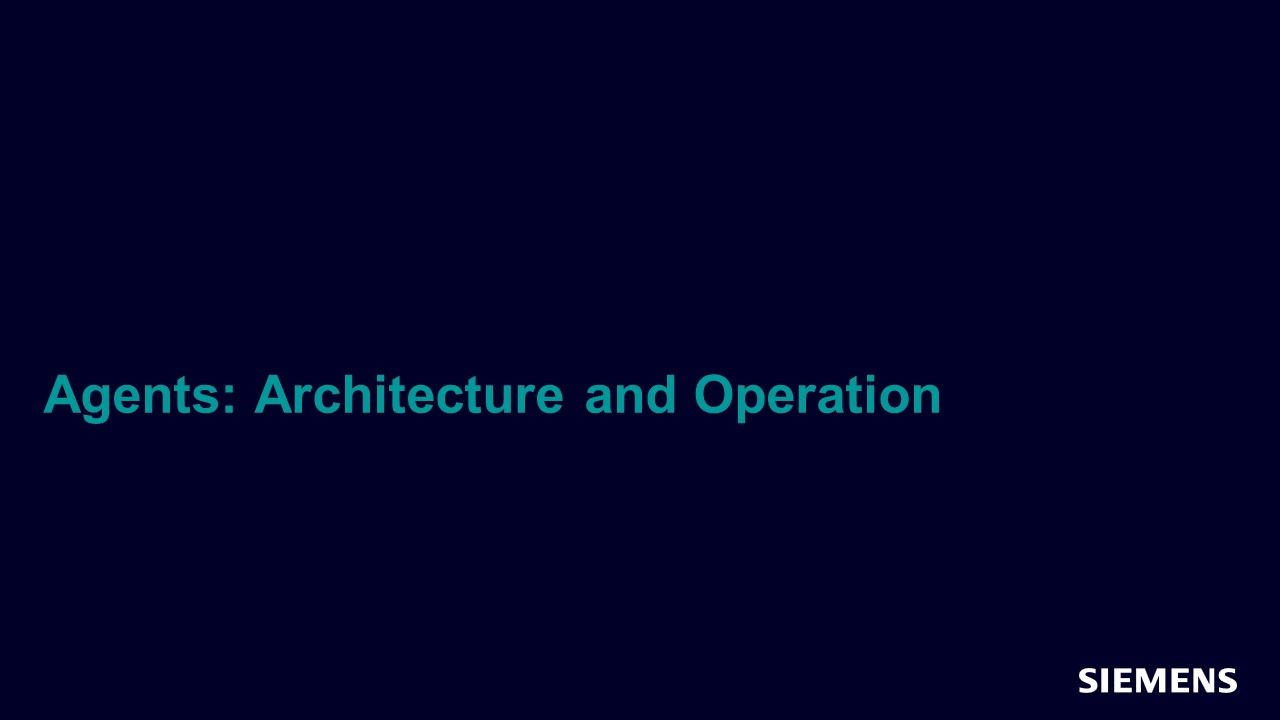
Agents: Architecture and Operation
Session - Feb 26, 2018 by Bob Oden
In this session, you will learn about components within a protocol agent and its associated bus functional models and the roles and responsibilities of these components including the abstraction level they operate at.
-
Code Generation Introduction
Resource (Slides (.PDF)) - Feb 26, 2018 by Jonathan Craft
-
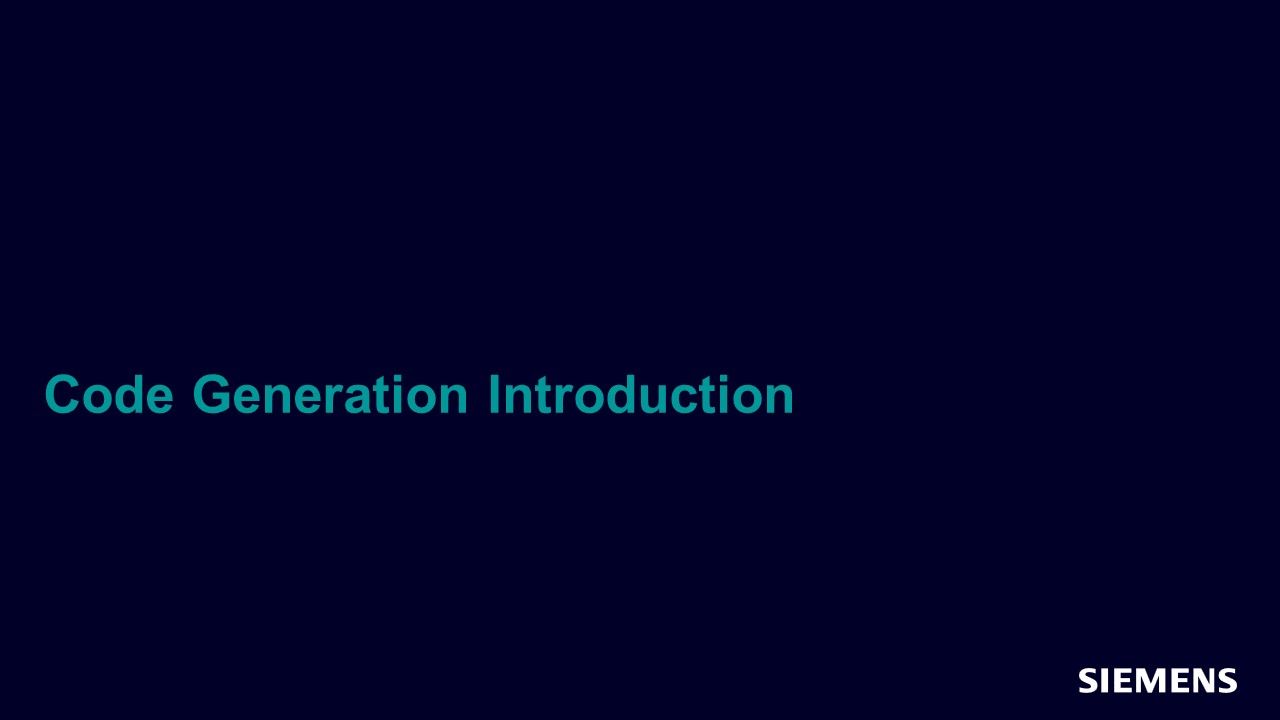
Code Generation Introduction
Session - Feb 26, 2018 by Jonathan Craft
In this session, you will learn why code generation can be a powerful tool and how to take advantage of it for the purposes of quickly producing a UVMF-based testbench.
-

UVMF - Overview
Session - Feb 26, 2018 by Bob Oden
In this session, you will learn what the UVM Framework is, the functionality it provides, its testbench architecture, and available documentation and support.
-
UVMF - Overview
Resource (Slides (.PDF)) - Feb 26, 2018 by Bob Oden
-
UVMF - Series Introduction
Resource (Slides (.PDF)) - Feb 26, 2018 by Bob Oden
-

UVMF - Series Introduction
Session - Feb 26, 2018 by Bob Oden
In this session, you are introduced to the UVM Framework and the list of sessions that comprise this video track.
-
UVM and C Tests: Perfect Together
Resource (Paper (.PDF)) - Feb 26, 2018 by Rich Edelman
This paper will demonstrate techniques and methods for using DPI-C along with a standard UVM Testbench.
-
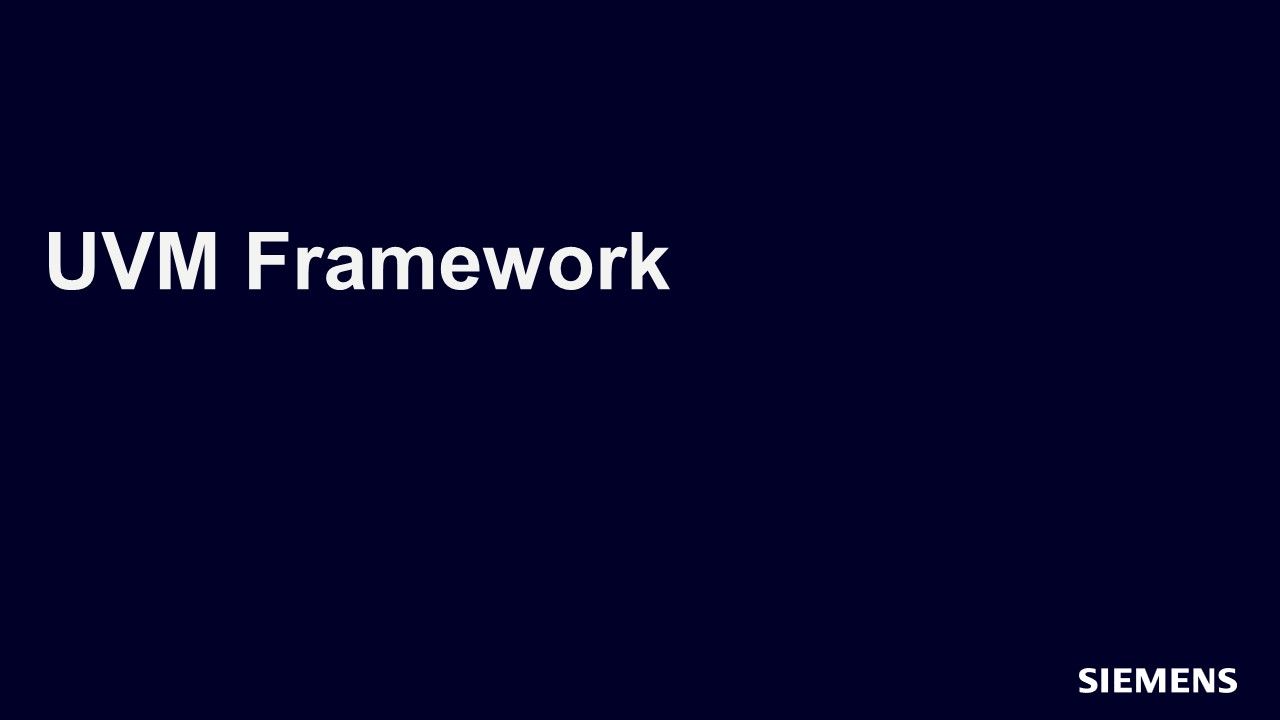
UVM Framework
Track - Feb 26, 2018 by Bob Oden
In this track you will learn more about UVM Framework and how it that provides a reusable UVM methodology and code generator for rapid testbench generation.
-
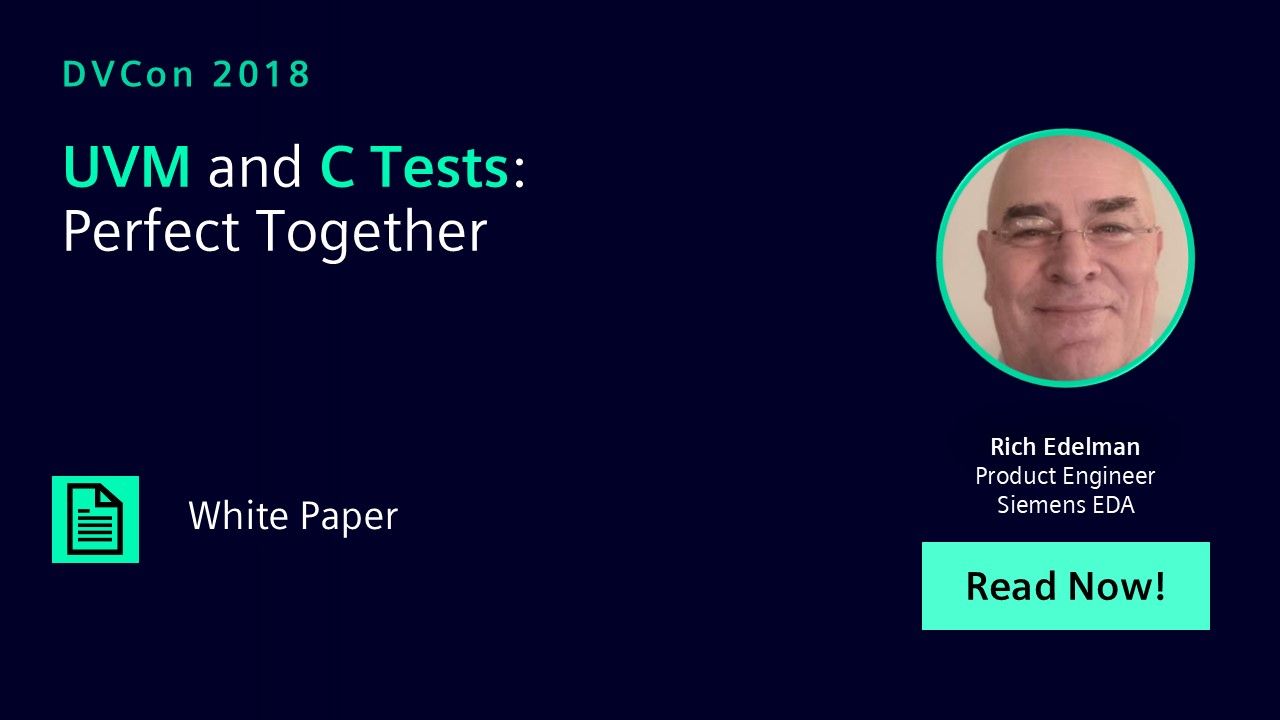
UVM and C Tests: Perfect Together
Paper - Feb 26, 2018 by Rich Edelman
Using DPI-C is easy and powerful. Using a SystemVerilog interface, many of the integration and connection issues can be eliminated. Using the techniques outlined above large, threaded C tests can be created easily. This paper will demonstrate techniques and methods for using DPI-C along with a standard UVM Testbench.
-
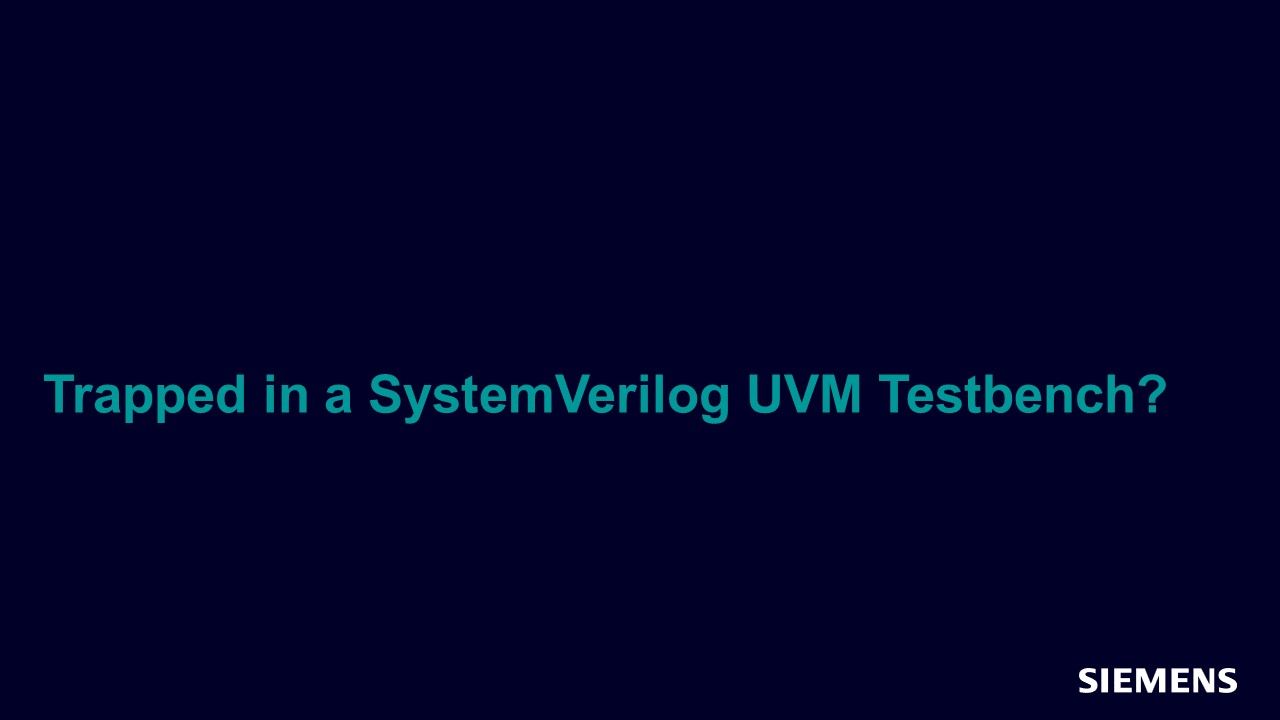
Are You Trapped in an Unfamiliar, Large SystemVerilog UVM Testbench?
Webinar - Dec 12, 2017 by Neil Bulman
This session will describe useful debug techniques for debugging a UVM testbench with 8 to 10 agents, and many stimulus generators, checkers and exception handlers running in parallel.
-
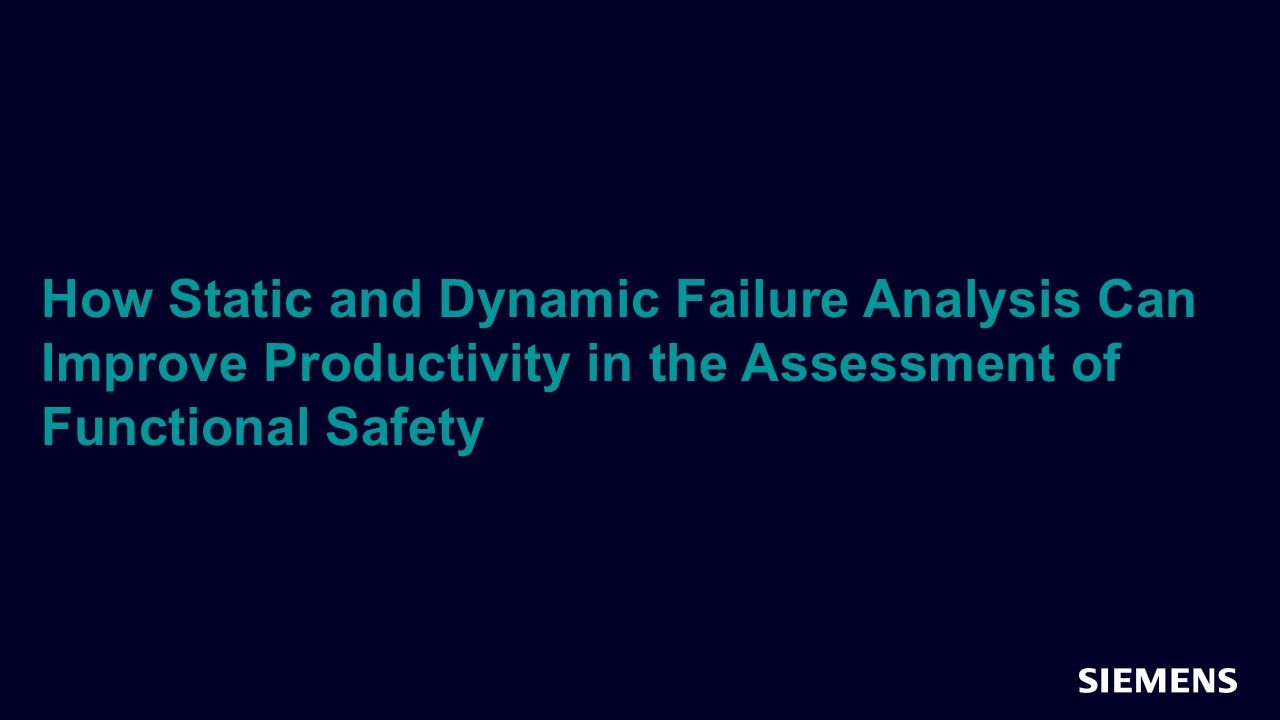
How Static and Dynamic Failure Analysis Can Improve Productivity in the Assessment of Functional Safety
Article - Dec 05, 2017 by Dan Alexandrescu, Adrian Evans, Maximilien Glorieux - IROC Technologies
In this article, we present a working example, implemented using the Questa Verification Platform where a 32-bit RISC V CPU has been subjected to an extensive static and dynamic failure analysis process, as a part of a standard-mandated functional safety assessment.
-
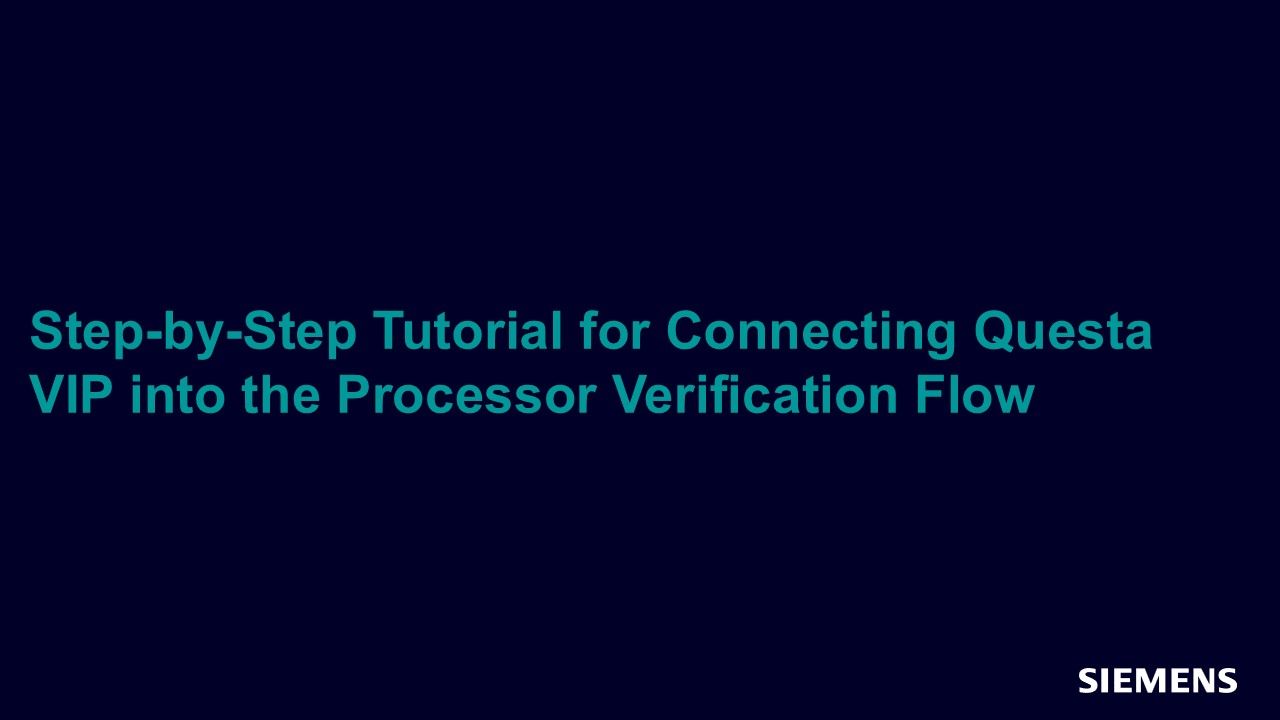
Step-by-Step Tutorial for Connecting Questa VIP into the Processor Verification Flow
Article - Dec 05, 2017 by Marcela Zachariasova, Lubos Moravec - Codasip, Ltd.
This article describes verification of RISC-V processors, focusing on the combination of automatically generated UVM verification environments by QVIP Configurator and Questa® VIP (QVIP) components. The section with step-by-step instructions will demonstrate how to add QVIP components into processor verification environments.
-

PA GLS: The Power Aware Gate-level Simulation
Article - Dec 05, 2017 by Progyna Khondkar
In post-synthesis, gate-level netlist (GL-netlist), power aware (PA) simulation, the fundamental focus is to identify PA specific cells already present in the netlist. The associated UPF with the netlist design, determines the supply network and power connectivity to these special PA cells, and aid to keep their outputs from being corrupted. Hence, the GL-netlist-based power aware simulation (PA-SIM) input requirements are mostly the same as for RTL simulation.
-
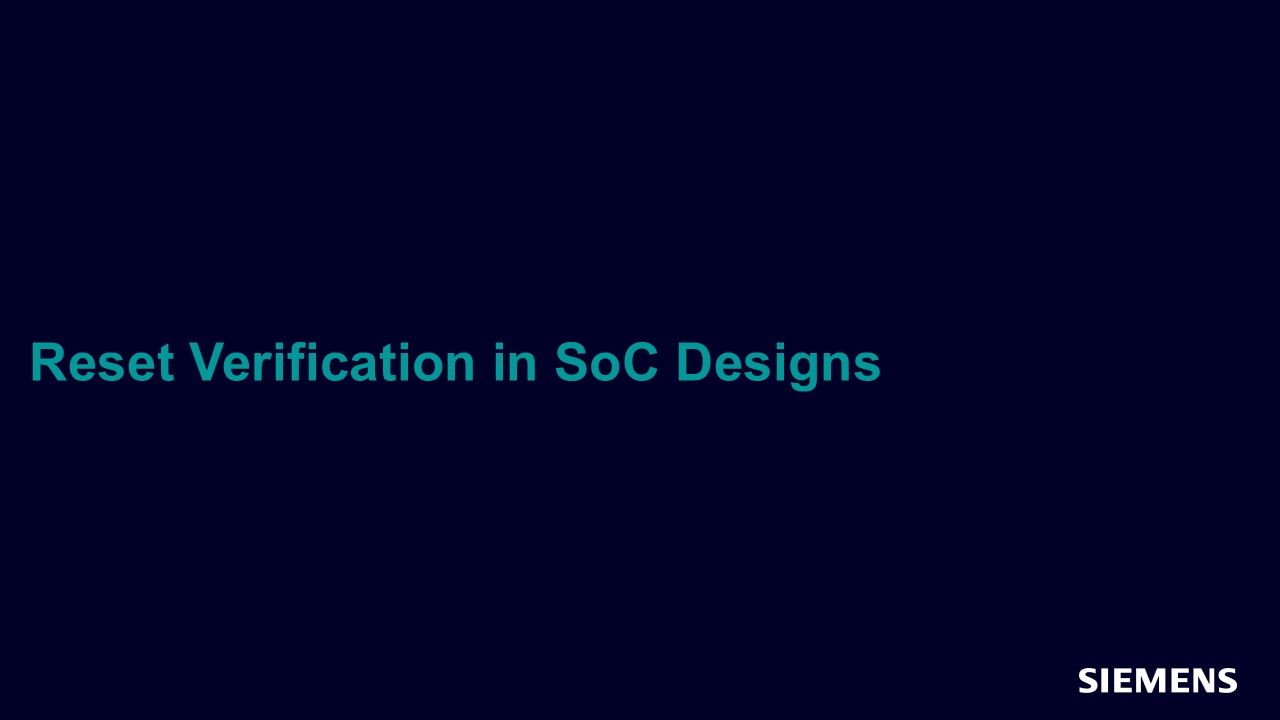
Reset Verification in SoC Designs
Article - Dec 05, 2017 by Kurt Takara
Modern system-on-chip (SoC) designs contain a high level of complexity in the reset distribution and synchronization circuitry. Verifying that a design can be correctly reset under all modes of operation presents a significant challenge. In this article, we present the commonly occurring issues that are involved in reset tree verification and solutions to address them.
-
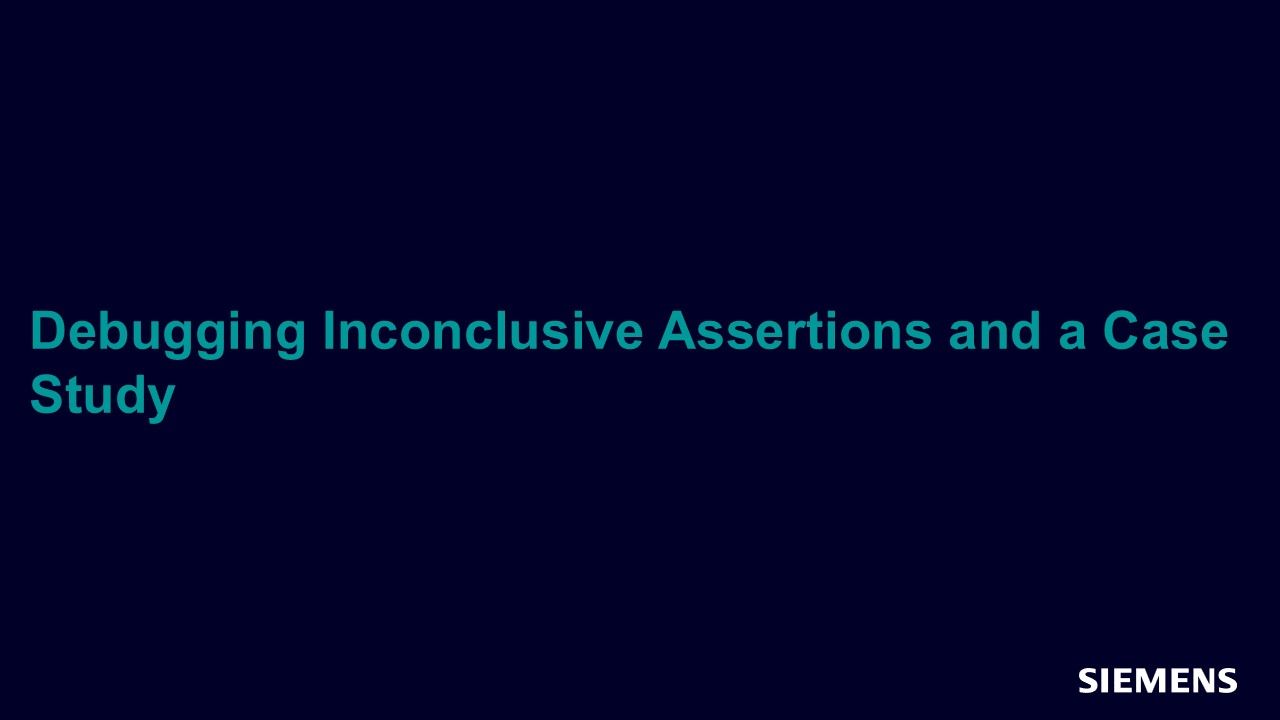
Debugging Inconclusive Assertions and a Case Study
Article - Dec 05, 2017 by Jin Hou
In this article, we discuss the flow to debug inconclusive assertions and use an ECC design as an example to show a decomposition technique for handling inconclusive assertions.
-
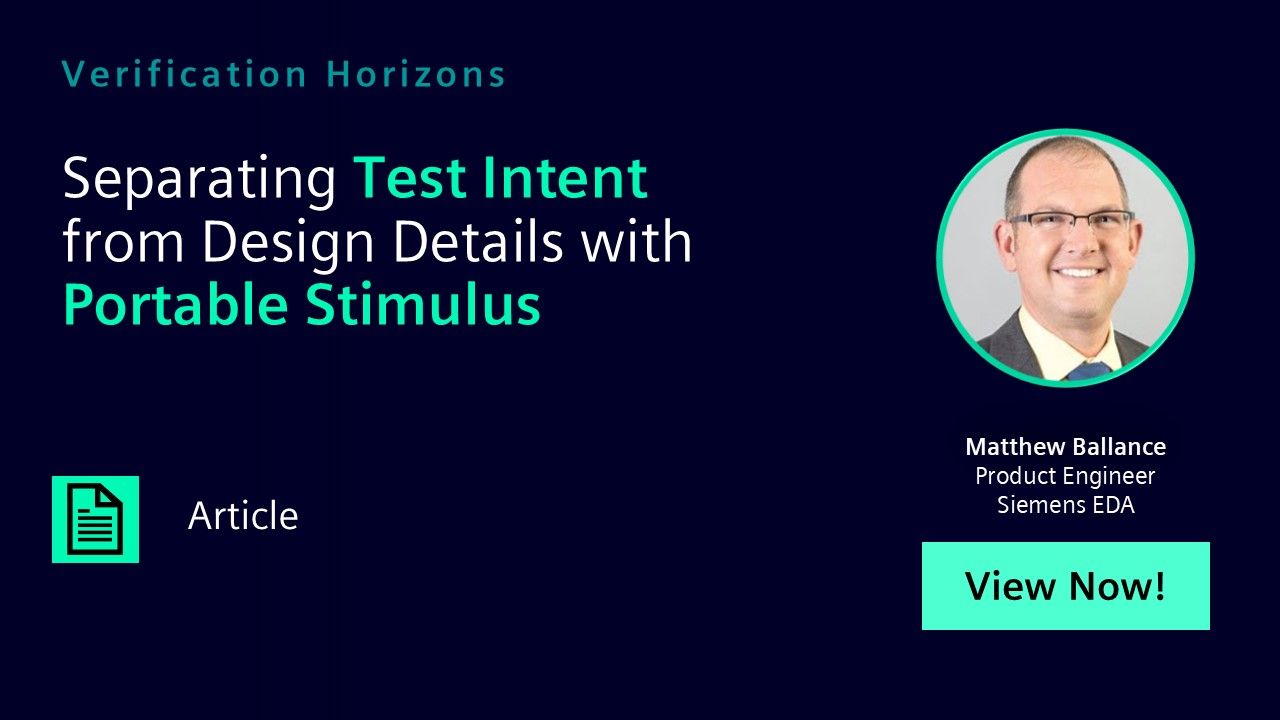
Separating Test Intent from Design Details with Portable Stimulus
Article - Dec 05, 2017 by Matthew Ballance
The emerging Accellera Portable Stimulus Standard (PSS) provides features that enable test writers to maintain a strong separation between test intent (the high-level rules bounding the test scenario to produce) and the design-specific tests that are run against a specific design. This article shows how Accellera PSS can be used to develop generic test intent for generating memory traffic in an SoC, and how that generic test intent is targeted to a specific design.
-
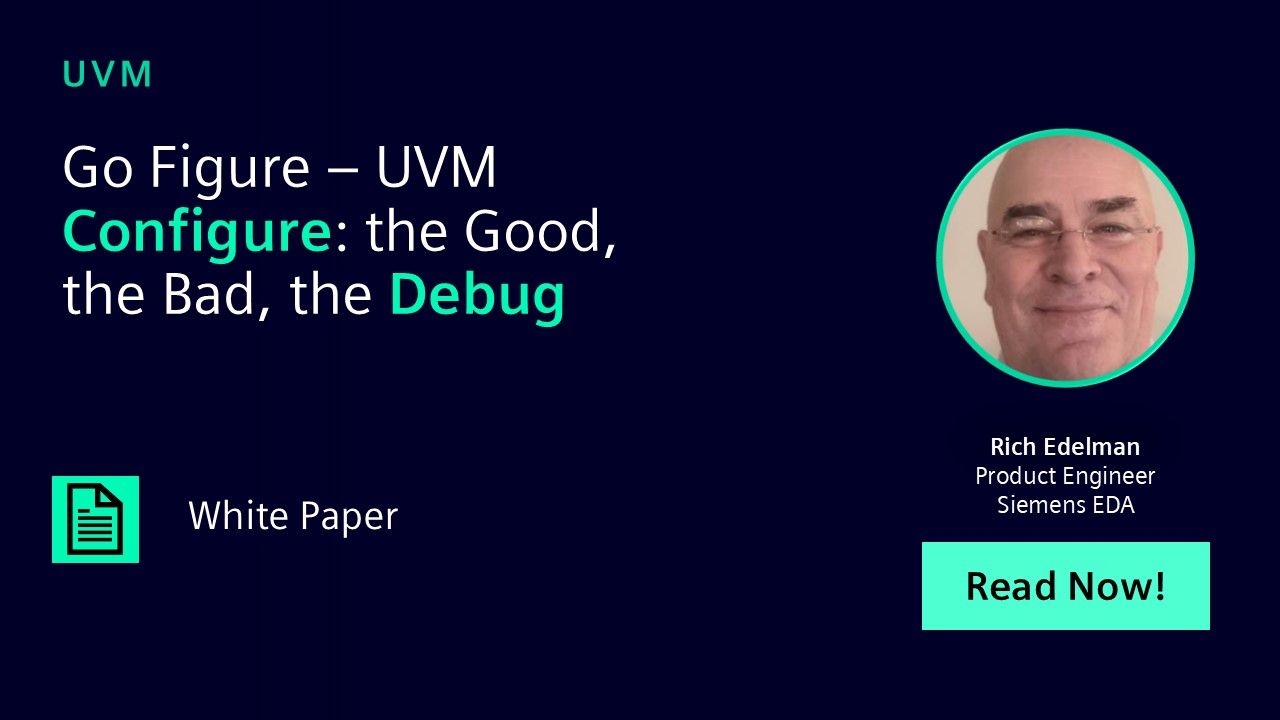
Go Figure – UVM Configure: the Good, the Bad, the Debug
Paper - Nov 10, 2017 by Rich Edelman
The UVM configuration database - the uvm_config_db - is used for setting parameters and controls. This database has a hierarchical aspect, is typed, has precedence or priority and has rules about first-wins or last-wins. In short, the UVM configuration database is a complex machine used by every SystemVerilog UVM testbench. It can also be hard to debug and complex to understand. This paper will try to shed some light on the complexity and provide some useful code extensions for debug.
-
Go Figure – UVM Configure: the Good, the Bad, the Debug
Resource (Paper (.PDF)) - Nov 10, 2017 by Rich Edelman
Configuration is unavoidable. Without better debugging and tracing in the UVM, it is best to limit the use of UVM config. This paper will try to shed some light on the complexity and provide some useful code extensions for debug.
-
UVM Connect 2.3.1 Primer
Resource (Reference Documentation) - Nov 08, 2017 by John Stickley
-
UVM Connect 2.3.1 Primer
Resource (Reference Documentation) - Nov 08, 2017 by John Stickley
-
UVM Connect 2.3.1 Kit
Resource (Tarball) - Nov 07, 2017 by John Stickley
-
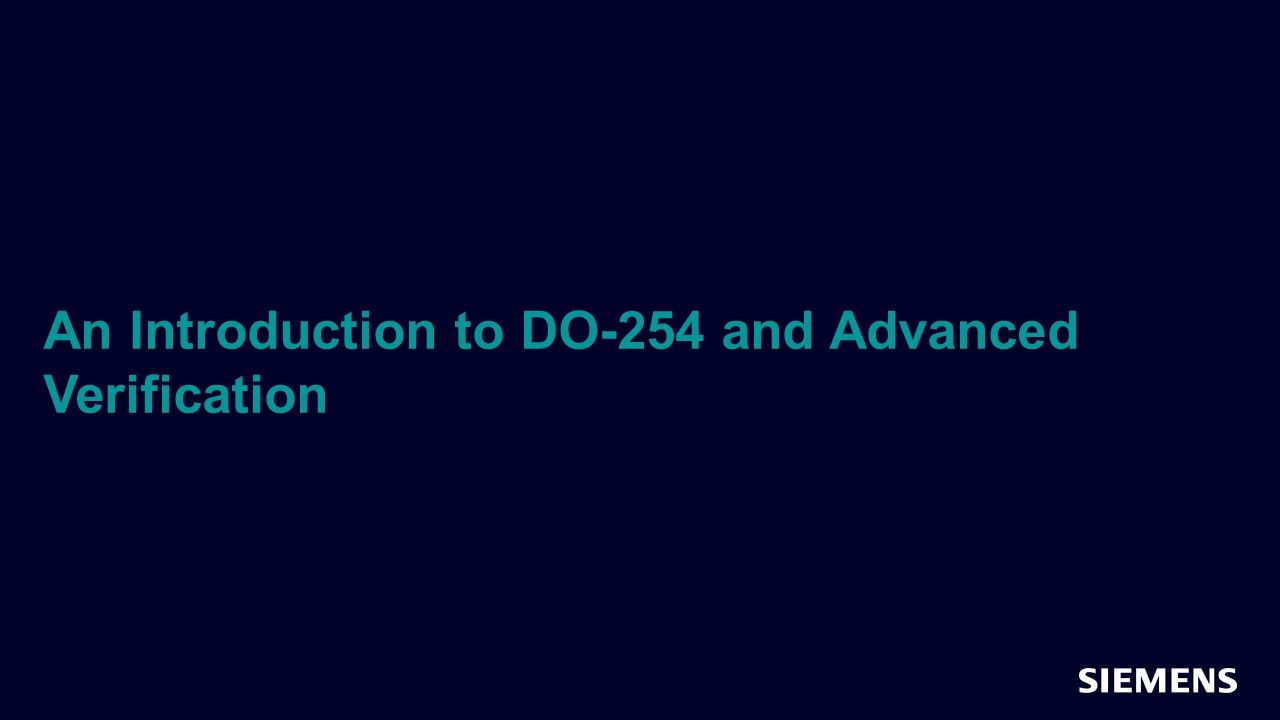
An Introduction to DO-254 and Advanced Verification
Webinar - Nov 02, 2017 by Tom Fitzpatrick
DO-254 describes the objectives of a verification process to allow the development of systems that meet your design assurance goals. This web seminar will explain the critical aspects of a DO-254-compliant process and show how many advanced verification techniques and tools may be applied to satisfy these objectives.
-
DO-254 for FPGAs
Resource (Slides (.PDF)) - Oct 17, 2017 by Alex Grove - Siemens EDA
The goals of verification are to show that the design does what it's supposed to do and show that the design does not do anything it's not supposed to do.
-
Coverage & Plan Driven Verification for FPGAs Session
Resource (Slides (.PDF)) - Oct 17, 2017 by